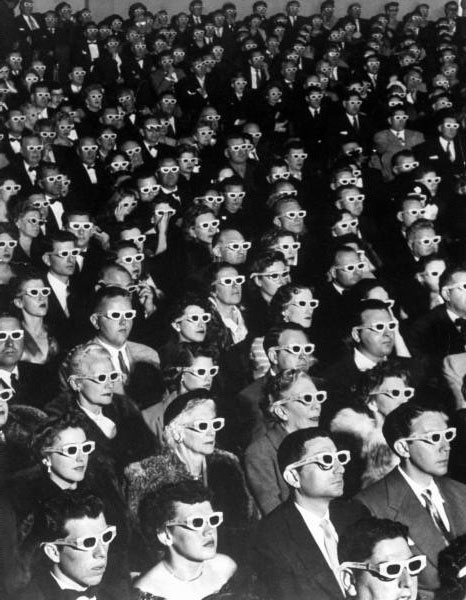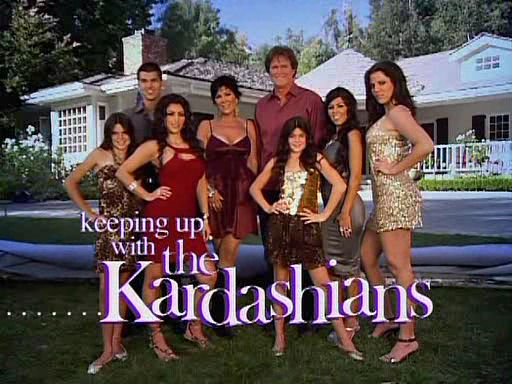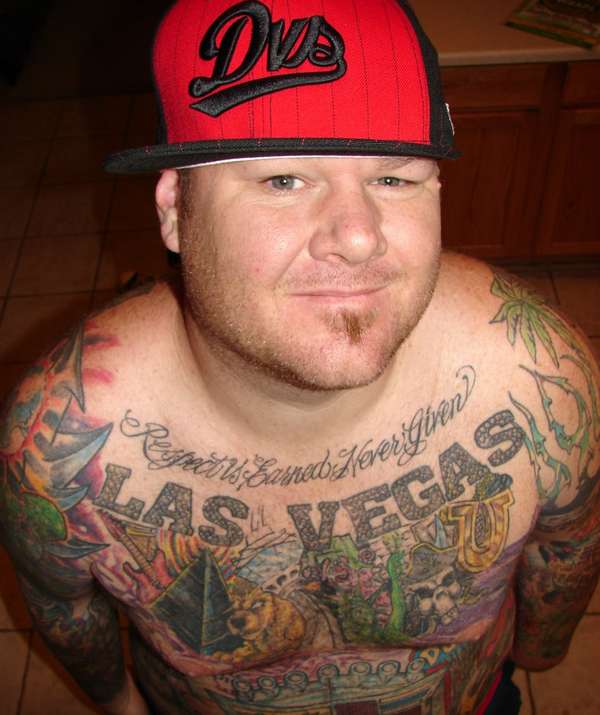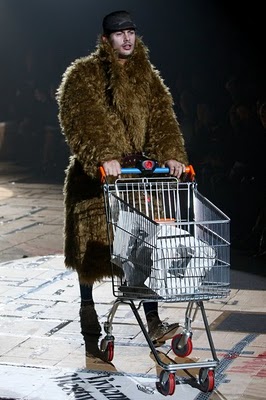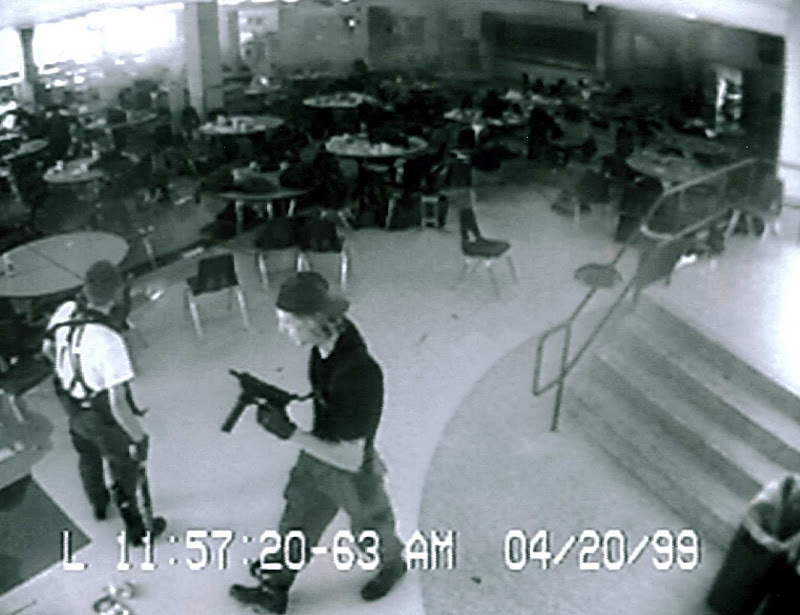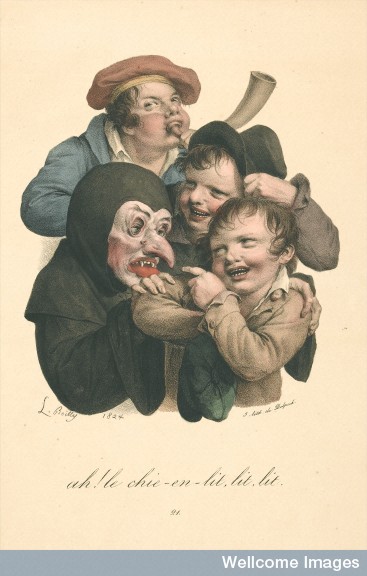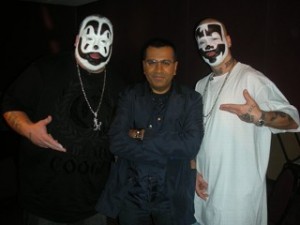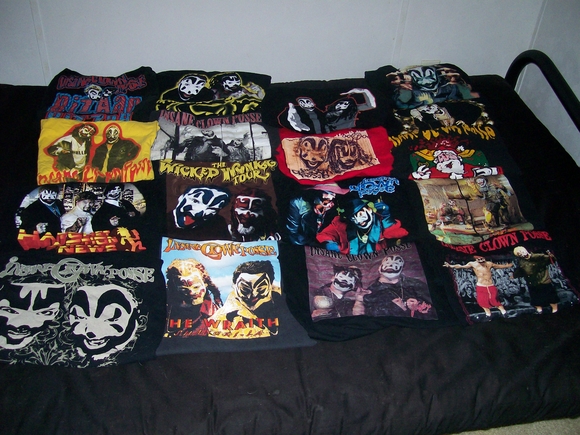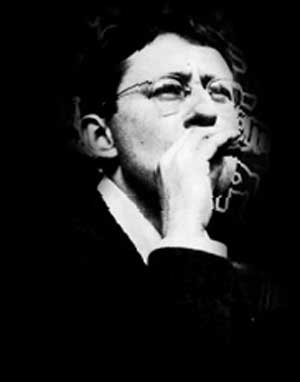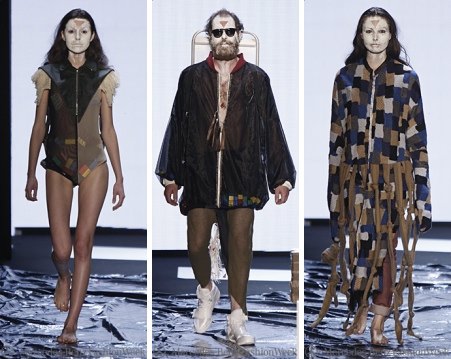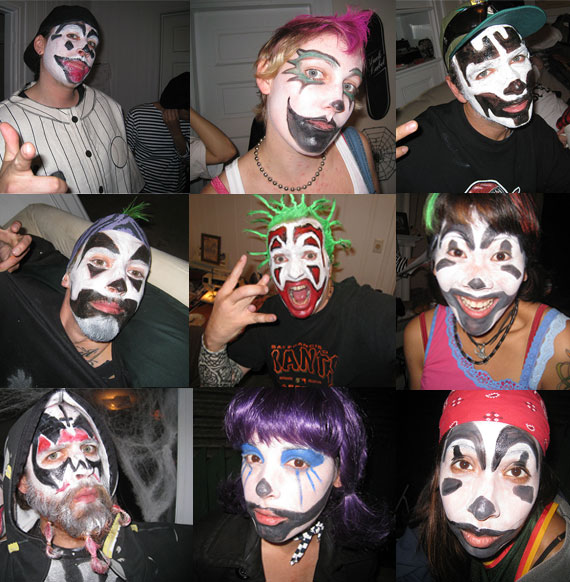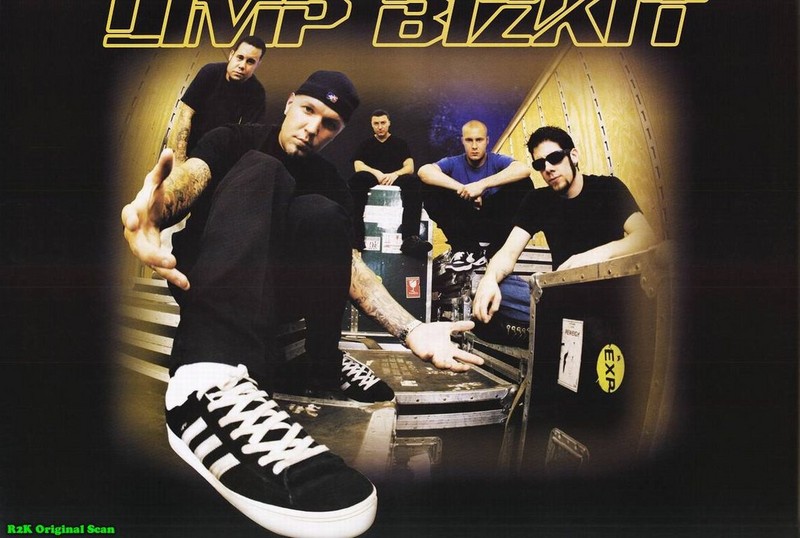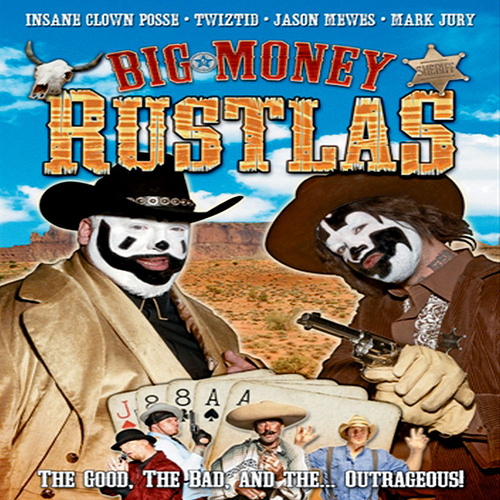[youtube=http://www.youtube.com/watch?v=wKlpMxBX-jk&fs=1&hl=en_US]
Counterculture Consumerism
Woop, Woop! I wrote this cuz juggaloz are realz. They’re havin babies and burying babiez. Cradle 2DA grave. Juggalos are more than a family. It’s like Juggaloz are its own religion. Even churches be preaching the gospel of Shaggy 2 Dope and Violent J. For realz. I wrote this report for school. No disrespect. This ain’t about no Juggalo Holocaust. I just want to set its straight. Much clown luv.
13 Juggalo Commandments
1.Thou shalt always holla a “whoop whoop” to let thy neighbor know you’re around
2.Thou shalt not take the Dark Carnivals name in vain,else shall have ye head sliteth
3.Always stay true to thy Family as they shall be true to you
4.Thou shalt not base ye life or looks on mainstream perceptions
5.Thou shalt always keep ye shyt wicked and wild
6.If called a “Freak, Crazy, Psycho, or Deranged, etc.” thou shalt raise both middle fingers and say thanks
7.Thou shalt keep ye hatchet sharp and ready for haters
8.If thou be a true Juggalo/lette, Thou shall always represent with pride
9.Thou shalt not pass judgement on another, lest it is passed on you first
10.Thou shalt always keep a blunt rolled and a beer ready for thy Homies
11.Remember if thou art faketh, we shall braketh thy *** in half
12.We are not against the world, the world is against us. So remember to keep them middle fingers ready
13.Be wut we wanna be,act how we wanna act,see wut we wanna see.
(StickyStoned, 2009)
Down with the Clowns
Scattered around the Internet are fan sites devoted to the Detroit rap duo Insane Clown Posse. On many you can find the 13 Juggalo Commandments written in graffiti font against the band’s logo of a cleaver wielding cartoon character (StickyStoned, 2009). The commandments are not lyrics to the group’s songs, but are instead guidelines that come out of a complex folklore created by ICP called the Dark Carnival. The mythology features a Tarot-esque deck of joker’s cards with prophetic meanings and symbols that would be vaguely religious in nature if it weren’t for their Hell-bound serial killing content (Rabin, 2010, September 21). While mainstream media claims to despise them, ICP’s fans, who call themselves Juggalos, seem be drawn in by the band’s ambiguity. This is most pronounced in the features of the band’s appearance. Their faces are painted in clown make-up like entertainers at a children’s birthday party, but their performances are known for displays of violence.
There are many legends of the Insane Clown Posse. One goes that, once upon a time, the members were normal guys who grew up in impoverished Detroit, but times were so bad that they could only find work at a toxic waste processing facility. They spent too long sludging around in the biohazardous by-product and went insane. Another story is that ICP used to be the band member’s graffiti tag for their gang Inner City Posse. ICP wasn’t very tough and rival gangs regularly beat them up so they decided to change their name to Insane Clown Posse and start a band (Island, 1998).
However the tale is told, ICP represents the underdogs of society. They are the self-proclaimed outcasts trying to survive in the wasteland of Detroit, a city ravaged by the negative impacts of globalization. Juggalo fans identify with their weakest member of society status and see them as the only true choice in an increasingly consumer driven society.
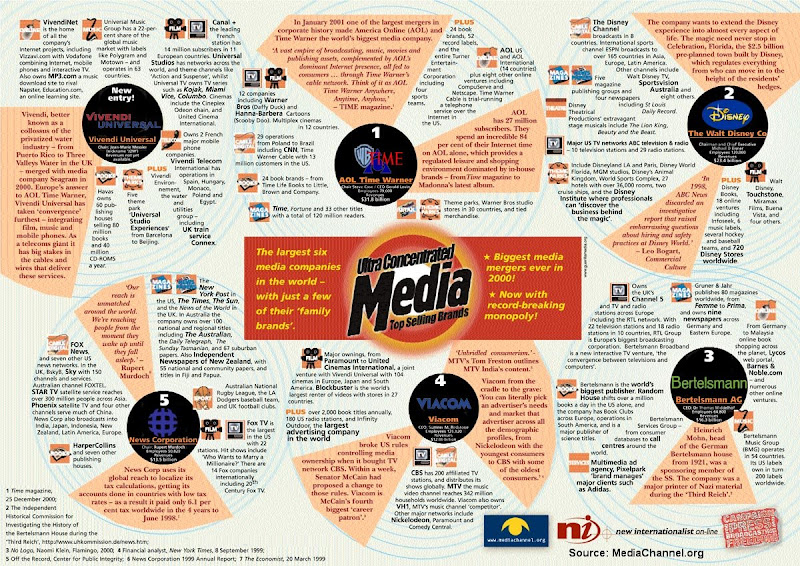
These six companies own nearly everything you see and hear. Pychopathic Records is distributed by Universal Music Group (upper left hand corner).
However, if one looks underneath the paint they’d find that ICP is actually just another cultural appropriation of the mainstream media conglomerates. This is hard to believe at first. ICP embodies the disillusions of a modern day working class that does not hold much power in society. What’s more is that the music’s ultra violent and misogynist content is intended by the band to be unmarketable. The aggression manifested is not just theatrical, but at times very real. Fans and performers alike are assaulted and out of it all a buck is made. The Insane Clown Posse represents an overall trend of culture towards this direction and so the question must be asked, how does the media turn acts of violence into marketable commodities?
A media survey through the lens of critical theory explains how cultural feedback loops in communication can lead to increasingly violent behavior. The phenomenon happens through repetitive encoding and decoding of texts produced by media corporations and interpreted by audience consumers. Preferred and negotiated readings of the dominant discourse are cycled back and forth against the backdrop of the political economy.
Cultural Commodities
To see how violence has become so prevalent in the media it is necessary to understand how raw culture becomes a commodity. In The Society of the Spectacle, Guy Debord examined, under a Marxist lens, how the bureaucratic capitalist market has become not just the dominant discourse, but also the lone hegemony of the modern world. “(T)he commodity the bureaucracy holds on to is the totality of social labor, and what it sells back to society is wholesale survival. The dictatorship of the bureaucratic economy cannot leave the exploited masses any significant margin of choice…” (Debord, 1967, Passage 64). According to Debord, choices offered by capitalism through the mass media become multiplied, but in reality they are all false and only benefit the “vulgar hierarchic ranks of consumption to a preposterous ontological superiority” (Passage 62). When the entirety of culture becomes commercialized through hegemonic market forces, knowledge suffers, the quality of life is degraded, and individuals become alienated within the society they live.
Under the shimmering diversions of the spectacle, banalization dominates modern society the world over and at every point where the developed consumption of commodities has seemingly multiplied the roles and objects to choose from. The remains of religion and of the family (the principal relic of the heritage of class power) and the moral repression they assure, merge whenever the enjoyment of this world is affirmed–this world being nothing other than repressive pseudo-enjoyment… (Debord,Passage 59)
If society ultimately suffers from commercialization, why would individuals initially accept the idea that identification can only come from the purchase of commodities? Debord writes that capitalist fat cats use the spectacle of media to trick the masses into accepting a consumer ideology. Deception may be a strong influence, but people are naturally inclined to feel a need to belong to society. Beyond that, especially in a Western capitalist system, individuals want to be at least equal if not exceed the social value of their neighbors. The “Keeping up with the Jones’” phenomenon has been around longer than Thornstein Veblen’s 1899 Theory of the Leisure Class. However it was Veblen who coined the term conspicuous consumption to define the wasteful spending and idleness by elites to showcase their wealth and importance. An example of a conspicuous commodity is designer clothing that is remarkably similar to ordinary clothing with the exception of its label and its higher price tag. However, over the past 100 years societal roles have shifted. In the postmodern period consumption has replaced production. Elites are no longer idol but integrated into the occupational structure. “Even Bill Gates, who is worth $43 billion or so, goes to work. It is becoming increasingly difficult to use work abstention and conspicuous consumption as a means of distinguishing upper class status” (Halnon, 2002).
Poor Chic
Consumption still exists, but instead of cultivating an individualized identity of idleness, personality traits are distinguished through goods and services that represent a certain lifestyle. Stereotypes are taken from devalued identities of the public commons. To impersonate a white collar member of society, like a doctor or elected official, would be a crime, but not someone from the underclass. Karen Halnon (2002) describes Poor Chic as the downward impersonation that appropriates the styles and status symbols of the working and underclass. Examples include mental illness homelessness, starvation, drug addiction, trailer park and ‘white trash’ status, tattooing, pimping, gang lifestyle and wrestling to ‘make fun’ of poverty. Poor Chic doesn’t erase poverty but does a good job at blurring the lines between the classes (2002). Poor Chic is embodied in angry white rock musicians like the Insane Clown Posse who have combined the musical styles of redneck heavy metal and inner city rap to create a genre called horrorcore (2002).
The popular music industry is Poor Chic in action. Adopting the impoverished stereotype saves time and money in the cultivation of identity (Halnon, 2002). On the other hand music does not require a great deal of capital investment so those who live in poverty can easily produce work. Mainstream media corporations discover these new creations and appropriate them for commercial production, but as soon as they do the original cultural meanings are lost.
In the process, the sort of commercial value is putting the cart in front of the horse. The commercial values start determining the content, rather than the content bringing the commercialism behind it to sort of pay the bills and sell the product. And it loses . . . authenticity. It loses its connection to the audience. Its creativity becomes a joke, ultimately. It becomes farce. (McChesney, 2001)
[youtube=http://www.youtube.com/watch?v=9KxTUZ33gdM&fs=1&hl=en_US]
Transgression
When culture becomes devalued through hyper-commercialization consumers become alienated. In reaction, producers of culture, such as musicians, grow more transgressive in an effort to disengage themselves from corporations. The Insane Clown Posse (ICP) is a band that rejects consumerism by raising the transgression ante to the extreme. They challenge nearly every conceivable social rule governing taste (Halnon, 2006).
In the 2002 report “Corruption of the American Child” for the Fox News program The O’Reilly Factor, Bill O’Reilly sat down to interview ICP front men Violent J and Shaggy 2 Dope. The segment was less of a Q and A than a scolding of the band. Intercut between the interview portions is footage of ICP autographing posters for young fans. Violent J is heard asking the kids explicit questions about their puberty and personal drug use.
Autograph signing-
VIOLENT J: How old are you?
KID 1: 12.
VIOLENT J: Did your nuts drop yet?
Cut to studio interview-
O’REILLY: (repeating for emphasis) Did you drop your testicles yet?… Also you said to another kid “How old are you?” and he said “14.”
Cut back to autograph signing-
VIOLENT J: Good, I’m glad you’re influenced by us. Do you do any drugs?
KID 2: Umm…
VIOLENT J: Go home and smoke something. (O’Reilly, 2002, March, 29)
O’Reilly then asked the group if they felt accountable. Violent J responds that they wouldn’t feel responsible even if Eric Harris and Dylan Klebold were ICP fans. “Even if those two nerds at Columbine would have had clown make-up on, one kid painted like him one kid painted like me, I wouldn’t have felt bad about it at all” (O’Reilly, 2002, March, 29).
The theme of ICP’s Dark Carnival concerts is the serial killing of selfish and perverted “chickens” and “piggies” of the world. The operatic violence often erupts into real fights and episodes of self-mutilation (Halnon, 2006). Halnon compares the ICP shows to Mikhail Bakhtin’s 1965 critique of Francois Rabelais’ interest in the Carnival Grotesque of medieval times. Carnivals were an inversion and debasement of the totality of officialdom. They challenged the structural and moral orders of everyday life. The world is destroyed so that it can regenerate and renew. Bakhtin’s grotesque bodies’ outward and inward features are often emerged into one (Halnon, 2006). This helps to explain interest in the baseness of bodily activities and violence during public performances.
[youtube=http://www.youtube.com/watch?v=EwT5XzwssU4&fs=1&hl=en_US]
Juggalos
Another distinction between the carnivalesqe heavy metal shows of the Insane Clown Posse and consumerism is the role of the individual in society. “Commercial society places primacy on individuality, self-interest, and autonomy. Bakhtin’s carnival power makes the individual feel that he is an idissoluable part of the collectivity” (Halnon, 2006). The participatory crowds that attend ICP concerts don’t call themselves fans, but identify themselves as family. They call themselves Juggalos, paint their faces in the same style as the clown performers on stage, and outside of the shows define themselves as outsiders. In the documentary Merchants of Cool, narrator Douglas Rushkoff interviews Juggalos on their way into an ICP concert.
RUSHKOFF: Subcultures like this are increasingly rare in America, a true underground, where kids feel spurned by mainstream culture and like it.
[on-camera] A lot of people seem to- seem to sense, like, anger coming off Juggaloes, because there’s a lot of, like, middle-finger stuff, you know? I mean, who’s the middle finger to?
4th BOY IN CROWD: The middle finger is to everybody who doesn’t understand what we’re doing. It’s to the world.
5th BOY IN CROWD: To the mainstream.
4th BOY IN CROWD: It’s to people who don’t understand, the people like these people who drive by honking their horns, drive by laughing at us. We don’t care, and that’s who the middle fingers and the “f-k yous” are for.
6th BOY IN CROWD: F-k. I mean to hell with society, you know? I mean, we worry about society and what they think. They control what goes on in our bedroom, you know, what we dress like, what our hair color is. Why let it control it here? This is where we have fun. (Dretzin, 2001)
“Heavy metal carnival is a politics of dissatisfaction and a demand for difference from the commercialized mainstream,” argues Halnon (2006). Yet, the Juggalos seeking refuge from the alienation of a consumer society under the big top of the transgressive carnival are still attached to the hegemonic machine of capitalism. The rise of Poor Chic has made the Juggalos an ideal marketing demographic even when the band and the fans are actively trying to exit the economic system.
The overall message of ICP is that it rejects the corporate mainstream. Media giants like MTV’s Total Request Live and Clear Channel Radio refusal to play the band’s music on the air fortifies ICP’s claim to underground legitimacy (Halnon, 2002). That’s not to say that ICP never gets airtime. They are just appropriated by the mainstream in a different way. The band is a staple subject on news programs wishing to illustrate the effects of controversial music and violent lyrics upon society.
[youtube=http://www.youtube.com/watch?v=gh5Gte9UUzE&fs=1&hl=en_US]
Agenda Setting
Strangely, there have been times in interviews when ICP denounces real violence in favor of theatrical violence, but the media ends up editing these views out. The preferred reading of the band is one where the group instigates real violence. This view is held even if ICP argues to the contrary.
In a recent ICP segment for ABC’s Nightline, the host Martin Bashir alleged that ICP’s violent lyrics caused its Juggalo fans to commit murder. At one point in the interview Bashir confronted Violent J with evidence and J begrudgingly admitted “some of [the fans] probably committed horrendous crimes.”
BASHIR: You admit that?
VIOLENT J: Absolutely. (Bashir, 2010, March, 9)
The interview segment then cuts to rowdy concert footage. After the program aired, the satirical alternative newspaper, The Onion, ran a more favorable interview with Violent J who accused Nightline of taking an agenda setting approach in producing the piece for air. J said that Nightline edited the video of the interview so that his words were portrayed out of context. (Rabin, 2010) To prove this the band posted the uncut version of the entire interview on its website.
In the unedited version Bashir continues to ask, “And do you think your music played a role?”
VIOLENT J: Not at all, not one bit. I wouldn’t be able to continue doing what I do if I thought that. Let me ask you this, I also know for a fact that unfortunately that out of all the concerts we’ve done in our lives, unfortunately, there’s been a great deal of Juggalos who have passed away on the way home in car accidents. Does that mean ICP produces poor driving?
BASHIR: You tell me?
VIOLENT J: No. (PsychopathicVideo, 2010)
In the full version ICP went on to claim that they were entertainers who were only interested in theatrical violence like professional wrestling or Stephen King novels. However, Nightline edited ICP’s explanations out of their final story.
They knew the picture they were painting before we even fucking did that interview… We made the point that millions of people bought our albums, and out of millions of people, there is going to be some bad apples. I’m sure Barbra Streisand fans have committed crimes as well…. Things like that we talked about, and he just kept rephrasing the same questions. They were going for what they needed. They needed some blue in their picture, and they needed some green. No matter what we said, they were going to get what they needed to paint that picture… (Rabin, 2010)
Counterculture is profitable whether in its pure form or as the subject of reactionary critique. Uncut, the more nuanced version of the Nightline interview would have been less marketable than the piece that aired. Conflict between artists and corporations sell, especially if the corporation takes the moral high ground.
[youtube=http://www.youtube.com/watch?v=EzclR-vXit4&fs=1&hl=en_US]
False Choice
However, while the group attests to the ills of corporate domination and the need to break out of the mainstream, ICP is still very much the part of the hegemonic system. ICP downplays its signing with two major records, Hollywood and Island, its affiliation with professional wrestling, and its motion picture franchise (Dretzin, 2001). ICP is what Debord calls a false choice. “The smug acceptance of what exists can also merge with purely spectacular rebellion; this reflects the simple fact that dissatisfaction itself became a commodity as soon as economic abundance could extend production to the processing of such raw materials” (Debord, 1967, Passage 60).
Merchants of Cool drew attention to corporate media’s subversive marketing tactics. In particular it highlighted the “cool hunters”, or ad executives, who videotaped young people in their homes talking about their hobbies and lifestyle. The cool hunters would then return to their Madison Avenue offices and use the information they collected to create marketing campaigns targeting the same demographic.
In 1998, ICP’s record label Island, a subsidiary of the Universal-Vivendi conglomerate produced Shockumentary. The ICP fan documentary is an example of corporate cool hunting of rebel consumers sandwiched in between music videos. The camera crew followed around Juggalos, drawing attention to their rebelliousness and counterculture, and interviewed distraught parents who wouldn’t allow their children to listen to ICP. One segment featured a consumer focus group of an middle-aged demographic. They reacted in distaste when presented with the album design for ICP’s Tunnel of Love. The cover graphically features a woman giving band member Shaggy 2 Dope a hand job. “Do they sell that in the X rated section?” one of the group members exclaims. “I hope! That is disgusting. They degrade women completely.” (Island, 1998)
However, at the same time, much of the documentary discusses the band’s wide array of merchandise for sale. The video is almost a commercial in the attention of detail given to t-shirts, posters, lighters, CD’s, wrestling videos, and even tattoos. “The secret to ICP’s merchandise is this,” explains the band’s manager as he displays a $150 ICP hockey jersey. “You might not like ICP’s music or what they stand for, you may not like hip hop music, whatever, but you’re going to like our stuff. Look at it, you’ve got to have it” (Island, 1998).
While the transgressive aspects of the band’s music and behavior are the theme of the documentary, the branding and marketing potential behind it are just as important. Transgression and branding combine into actual violence that fans have come to expect from ICP shows.
VIOLENT J: We break necks, shatter spleens, crush spines, and snap vertebrates. That’s how we get applause.
KID: It’s violent. [laughing] Man, there’s people that are jumping on top of your head. I mean I was in the front row the whole last concert… This girl tried to freak Violent J from the microphone. He just picked her up, lifted her over his head and threw her into the crowd. It was so cool. (Island, 1998)
ICP actually reinforces the alienation that it professes to alleviate. Along the way transgression becomes commoditized and violence becomes a form of conspicuous consumption. “Behind the masks of total choice, different forms of the same alienation confront each other, all of them built on real contradictions which are repressed” (Debord, passage 63).
[youtube=http://www.youtube.com/watch?v=o0xewi_Gdc8&fs=1&hl=en_US]
Depoliticizing Culture
According to Robert McChesney music and culture are directly connected to social and political engagement. When corporations control media production and distribution they remove these elements to make music more commercially marketable. However, consumers still crave controversy, struggle, and conflict. To answer their needs media corporations replace it “with a lot of misogyny, a lot of violence, which gives the illusion of conflict and tension and excitement without the real thing. It’s just picking on the weakest members of society” (McChesney, 2001).
This summer ICP’s Gathering of the Juggalos concert drew headlines when fans attacked the singer and former playboy model, Tia Tequila. Tequila recounted what happen for the tabloid website TMZ.
I went onstage and immediately, before I even got on stage, DUDES were throwing HUGE STONE ROCKS in my face, beer bottles that slit my eye open, almost burnt my hair on fire cuz they threw fire crackers on stage, and they even took the sh*t out of the port-0-potty and threw sh*t and piss at me when I was onstage. (TMZ, 2010)
In his blog, Violent J wrote that he was upset with the fans for being violent and that he was concerned about getting sued.
I wish that shit didn’t happen to her. We said it in our seminar, please don’t throw shit at her… But why would you make somebody a target and try to hurt them? Especially somebody trying to entertain you? That’s it. That’s my stale ass speech. I’m pissed off because we’re getting’ sued for millions and just like everybody else out there we ain’t got no fuckin’ money. (Bruce, 2010)
This was the exact opposite stance that Violent J took in Island’s Shockumentary film where he promoted violence and fans even reported him perpetrating it against women. In addition rapper Method Man, who was one of the only African American artists performing at the event, was also assaulted on stage. Violent J wrote that he made an apology to Method Man, but that he was able to quickly forget the incident.
I said “Man we’re sorry that happened to you and we apologize for it.”… I tried not to let that bum me out before this extra special show and thankfully I was able to forget it completely once I stepped out there with my brother Shaggy. (Bruce, 2010)
McChesney believes that this is actually a marketing ploy. By directing anger towards vulnerable members of society, consumers don’t pass judgment on the corporate elites. “So it’s a very unthreatening type of resistance. It’s easy to pick on gay people and minorities and women. That’s not going to . . . you aren’t going to have to worry about it” (McChesney, 2001).
While Violent J expressed some remorse for what happened to the victims of his show’s mob violence, he did not dwell on it for very long. As he stated in past interviews, he is not personally responsible for deranged fans; that’s the record companies’ job (O’Reilly, 2002, March 29). TMZ and CNN, both owned by the conglomerate AOL-Time Warner, made a profit in their tabloid reporting of the violence. However, depictions of the media corporations themselves were conspicuously absent in the coverage of the assault. However, it can be assumed that ICP’s record company, Universal, had a strong hand in the concert’s production and promotion. If McChesney is right, then the record companies don’t have to apologize because, in the neoliberal model, women and minorities don’t pose a serious threat to their survival.
If you go out and start picking on the WTO and the people that own the country, now that’s another matter. And that sort of stuff, that type of critique isn’t there. But people want tension. People understand there’s something going on in the world–it’s not just a “Brady Bunch” world we live in. But they’re getting Eminem and this sort of stuff. That’s the corporate response. That’s what they can hand out. (McChesney, 2001)
Instead of an uprising by the masses on the elites, the revolt is diverted by corporations back onto the consumers themselves. A feeding frenzy ensues and the masses are too busy destroying each other to attack the source of their trouble. Corporations benefit by avoid damaging criticism and even make a profit by commoditizing the violent diversion. Consumers pay for the pleasure of self-flagellation.
[youtube=http://www.youtube.com/watch?v=_-agl0pOQfs&fs=1&hl=en_US]
ICP: How do They Work?
Critical theory of the political economy can explain how culture is appropriated by media hegemonies, sold back to society, and how violence arises in the process. In the documentary Merchants of Cool, Douglas Rushkoff talks about the interaction between corporations and consumers.
And that’s when it hit me: It’s a giant feedback loop. The media watches kids and then sells them an image of themselves. Then kids watch those images and aspire to be that mook or midriff in the TV set. And the media is there watching them do that in order to craft new images for them, and so on. (Dretzin, 2001)
Perhaps Rushkoff is referring to Stuart Hall’s essay on Encoding/Decoding. Traditionally, mass communications research has “conceptualized the process of communication in terms of a circulation circuit or loop” (Hall, 1980, p. 128), but Hall added that within it there were five distinct moments: production, circulation, distribution consumption, and reproduction. Loops can be discursive to respond to different types of audiences. Loop structure is in the dominant hegemonic position when the audience decoded the encoded message exactly as it was intended. This is “the ideal-typical case of ‘perfectly transparent communication’ – or as close as we are likely to come to it ‘for all practical purposes’” (Hall, p. 136). Conversely, the encoding of media loops can be negotiated positions for the decoders.
Decoding within the negotiated version contains a mixture of adaptive and oppositional elements: it acknowledges the legitimacy of the hegemonic definitions to make the grand significations (abstract), while, at a more restricted, situational (situated) level, it makes its own ground rules – it operates with exceptions to the rule. (p. 137)
An alternative logic to decoding could be established by reinterpreting the encoding of a dominant discourse. In the past, when the negotiated position had taken on an oppositional reading of a text it was often celebrated in academia for resisting the ideology of a dominant culture. Douglas Kellner warned against this approach because “Such studies also might lose sight of the manipulative and conservative effects of certain types of mass-mediated culture and thus serve the interests of the cultural industries as they are presently constituted.”(1995) He illustrated this with the example of an audience study of a homeless shelter’s viewing of the movie Die Hard. The homeless cheered when police and authority figures were destroyed in the movie. They took a negotiated position on the dominant discourse. Nevertheless, by cheering for destruction, they unknowingly took the overall hegemonic position in the movie that violence is a solution to social problems. “Unqualified valorization of audience resistance to preferred meanings as good per se can lead to populist celebrations of the text and audience pleasure in its use of cultural artifacts” (Kellner, 1995).
Kellner argued, that there is too much emphasis on textual analysis and even when the negotiated position is taken, it is possible for elements of the dominant position to be decoded as their producers intended them. He advocated for a refocus in cultural studies away from the text and towards the investigation of political economy.
Study of media ownership, the relations between big business, media corporations and the state, and the ways that the commercial system constrains democratic discourse, excludes certain voices, and limits the nature and content of cultural production helps one see what sort of a society that one lives in and why the cultural industries are so important and central to contemporary capitalist consumer societies.Furthermore, study of the process of production discloses how the structure of media institutions shapes the nature of news and entertainment and helps determine what one does and does not see and hear. (Kellner, 1995)
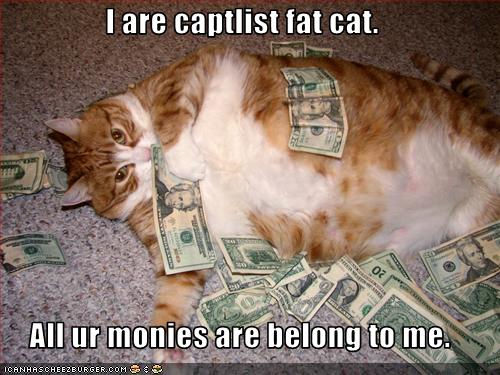 This is exactly what McChesney did in his book Rich Media, Poor Democracy. He said that capitalism can be so flexible that it can even allow the anti-consumer sentiment of counterculture into the market as long as it can create a profit for corporate shareholders. This echoes Halnon’s branding of “rebel consumers.” McChesney cited Friedman’s seminal neoliberal work Capitalism and Freedom that “profit making is the essence of democracy, any government that pursues antimarket policies is being antidemocratic, no matter how much informed popular support they might enjoy” (McChesney, 1999, p. 110). As long as the market is free, little else matters so media hegemonies won’t be motivated to censor dissent.
This is exactly what McChesney did in his book Rich Media, Poor Democracy. He said that capitalism can be so flexible that it can even allow the anti-consumer sentiment of counterculture into the market as long as it can create a profit for corporate shareholders. This echoes Halnon’s branding of “rebel consumers.” McChesney cited Friedman’s seminal neoliberal work Capitalism and Freedom that “profit making is the essence of democracy, any government that pursues antimarket policies is being antidemocratic, no matter how much informed popular support they might enjoy” (McChesney, 1999, p. 110). As long as the market is free, little else matters so media hegemonies won’t be motivated to censor dissent.
The logical consequence of a commercial media system is less to instill adherence to any ruling powers that be – though that can and does of course happen—than to promote a general belief that politics is unimportant and that there is little hope for organized social change. (p. 110)
Neo liberal democracy therefore has an important and necessary by-product—depoliticized citizenry marked by apathy and cynicism. If electoral democracy affects little of social life, it is irrational to devote much attention to it. The United States provides the preeminent model of “neoliberal” democracy and shows the way for combining a capitalist economy with a largely toothless democratic polity. (p. 111)
Corporations can live in a world of criticism as long as they can collect a profit from it through the free market. This is the commoditization of dissatisfaction observed by Debord. Elites and tastemakers appropriate it through Poor Chic and thus buy into anti-corporate corporatization. Bands like ICP embody society’s attempt to exit the commercialized system through increasingly transgressive performances that push the envelope on what is socially acceptable. Baseness becomes stylized violence; stylized violence becomes actual violence. However, the band and its fans are linked to corporations through an inescapable corporate culture. The corporations make an increasing profit, the fans become more alienated, and so the band pushes away further. This cycle perpetuates itself because society tries to exit a hegemonic system, but is not politically engaged.
Questions for Future Study
Based on Hall’s, Kellner’s, and McChesney’s findings, analysis of the neoliberal model should not just look at audience decoding of the dominant discourse, but instead the emphasis of the political economy of production of a text. The question in the past has been how does an audience interpret violence in popular culture? This should be slightly modified to ask, how is violence in popular culture used as a commodity by different media sources?
A discourse analysis using critical theory and cultural studies could be conducted to answer this question. The discourses should measure how the main actors interpreted ICP violence as well as their connection to the larger political economy. As in the literature survey above, media sources should be chosen over a broad range of attitudes: from conservative to moderate to progressive. The analysis could be measured by looking at the overall size of the media source and how it judges the violence of ICP. Do larger media conglomerates treat the band as a scapegoat more than smaller media organizations? Based on the literature reviewed for this paper they do. The O’Reilly Factor plays on Fox News, a subsidiary of News Corporation. Nightline’s ABC is part of the larger Disney conglomerate. Both blame ICP for corrupting youth and their murderous fans. PBS’s viewer supported Frontline applauded ICP’s counterculture roots and blamed the media conglomerates for the coarsening of American culture. The independent publication, The Onion, took a similar stance. There seems to be a correlation between media giants making moral judgments of the band and smaller media using ICP to criticize the conglomerates. Big media not only sends a strong moral message, but also produces the same texts it seeks to burn. Disney not only owns Nightline, but the Hollywood record label to which ICP briefly was signed (Island, 1998).
[youtube=http://www.youtube.com/watch?v=vKWJvldhXpQ&fs=1&hl=en_US]
Conclusion
Over time, media and entertainment have become increasingly commercialized. This is due to the emergence of neoliberal markets and the formation of powerful corporate conglomerates. By tapping into individuals’ need to belong to a larger society corporations promote conspicuous consumption. Self-worth is defined by what material wealth one accumulates. In postmodern times consumption has replaced production. Lifestyle has come to be defined by goods and services. Elites have used their material wealth to appropriate existing cultural stereotypes to define themselves. In their role playing, elites tend to identify with the working and under classes. These lower classes are associated with production of culture because they cannot afford to consume as much as the elites.
Music is one of the cheapest cultural artifacts to produce. However, when commercial entities discover a new type of music and commoditize it for consumption the cultural value is lost in the process. In an effort to avoid commoditization, cultural producers attempt to make their art less prone to commercialization. A transgressive value system of coarse content is woven into music to make it less commercially marketable. The music becomes a rebellion against the establishment and a counterculture is established. Despite its debasement and violence, members of society seek refuge in the counterculture for its communal aspects. In the world of conspicuous consumption individualism is favored, but under the tent of counterculture it is thought that there is an equalization of society. No one’s self-worth is seen as greater than another’s.
Yet in the neoliberal model the invisible hand of the market is everywhere, even in the places it professes not to be. Society becomes more transgressive to avoid commercialization and in the process transgression becomes a marketable commodity. Even when cultural producers take a softer approach, corporations will step in and coarsen their products to make them more profitable. As media conglomerates grow, independent producers become unavoidably linked to the hegemonic machine. This creates a viscous cycle: The more society tries to break away, the more commercial entities will feed the rebellious ideology back to consumers. This creates false choice as even dissatisfaction can fetch a price on the market.
The result is a depoliticizing of culture. People need to hear struggle, and conflict in their music to confirm and explain the inequalities found in society. Feelings of tension should drive political engagement that brings forth beneficial social change. If this happened, the institutional elites, including the media conglomerates, would topple from power. In response, they redirect their listener’s aggression away from the corporations and towards the weaker segments of society. Misdirected hatred of an unjust world combined with a transgressive value system creates real violence. In an attempt to protect itself from corporations, society destroys itself in the process.
Critical theory explains how these feedback loops are perpetuated in the political economy. Texts are encoded by media producers and decoded by consumers. In each text there is a dominant discourse, or intended meaning. When it is decoded correctly direct communication can be said to have taken place. Audiences often decode the texts to create their own meanings that are an alternative to the producer’s. While decoders may think that that they are reinterpreting the text in an original way, they may unknowingly still be consuming the intended message in partiality or entirety. Consumers in a capitalist society may think that they are rebelling by digesting anti-consumer sentiment, but in reality this message could be a Trojan Horse of a commercial commodity repackaged by a corporation.
The Insane Clown Posse is a band that embodies rebel consumerism. They create a counterculture that responds to the alienation of living in a capitalist society by challenging every imaginable societal norm governing taste. Paradoxically, to sustain their livelihoods as musicians they have to work within the neoliberal model and so they have quietly signed with big record companies. Even without the media conglomerates in the picture, ICP embodies a capitalist entrepreneurial spirit. They embrace the band’s identity through branding, at times quite literally as in the promotion of ICP tattoos, and merchandising. ICP t-shirt varieties are perhaps one of the more prolific varieties of band clothing. They have also expanded outside of the traditional music market. ICP doesn’t just make records and play concerts; they also are professional wrestlers and movie stars. For a band that makes a living attacking the evils of the capitalist system, Violent J and Shaggy 2 Dope would be nothing without its structure.
This could be dismissed as simply hypocritical like the protester at the 1999 WTO riots in Seattle who smashed up the Nike store while wearing sneakers with the trademark swoosh on them. However, transgression brings with it violence. ICP has often claimed that its messages shouldn’t be taken in earnest because the portrayals are largely theatrical. This may very well be their intention, but to the marginalized society, the band depicts the underlining tensions that govern every day life and, thus, are very real. ICP is right, it doesn’t have the power to turn their fans into murderers. Good art is controversial because it serves as a representational mirror that depicts the warts and scars that society would rather not see. It forces us to come to terms with ourselves no matter how ugly we have become. This is what happened at the Gathering of the Juggalos concert this summer. Juggalos define themselves as family, as equals, but the violence that erupted against women and minorities suggested that there was a societal hierarchy despite that. Corporations continued to benefit from the media coverage of the spectacle –there’s no such thing as bad publicity- and vulnerable members of society continued to be marginalized. Even in the creation of a counterculture, society remained the same. The only difference was that it was painted over with clown make-up.
References
Bashir, M. (Producer). (2010, March, 9). Music and murder [Television series episode]. In (Executive producer), Nightline. ABC.
Bruce, J. (2010). Violent j’s gathering of the juggalos report. Retrieved from http://www.insaneclownposse.com/icp2010/?p=1050
celebritypicturesarchive.com. (2010). Icp pictures | icp gallery, photos, pics. Retrieved from http://www.celebritypicturesarchive.com/pgs/i/icp/icp-pictures.htm
Debord, G. (1967). Society of the spectacle [Translation: Black & Red, 1977, Transcription/HTML Markup: Greg Adargo.]. (Online Book), Retrieved from http://www.marxists.org/reference/archive/debord/society.htm
Dretzin, Rachel (Producer). (2001). Merchants of cool [Television series episode]. In, Frontline. WGBH, Boston: PBS.
Hall, S. “Encoding/Decoding.” Culture, Media, Language: Working Papers in Cultural Studies, 1972-79. London: Hutchinson, 1980. 128-138.
Halnon, K. B. (2002). Poor Chic: The Rational Consumption of Poverty. Current Sociology, 50(4), 501-516.
Halnon, K. B. (2006). Heavy Metal Carnival and Dis-alienation: The Politics of Grotesque Realism. Symbolic Interaction, 29(1), 33-48.
Insane Clown Posse: Shockumentary. 1998. Island Records, New York.
Kellner, D. (1995). Media communications vs. cultural studies: overcoming the divide. Communication Theory, 5(2),
McChesney, R. (1999). Rich media, poor democracy communication politics in dubious times. Champaign, Illinois: University of Illinois Press.
McChesney, R. (2001, February 27). frontline: merchants of cool: interviews | pbs. Retrieved from http://www.pbs.org/wgbh/pages/frontline/shows/cool/interviews/mcchesney.html
O’Reilly, B. (Producer). (2002, March, 29). The corruption of the American child [Television series episode]. In, *Executive producer) O’Reilly Factor. Fox News.
Psychopathic Records, . (2010, March 09). Insane clown posse & psychopathic records presents “the oddball bonanza show”. Retrieved from http://www.prlog.org/10567010-icp.jpg
PsychopathicVideo. (Photographer). (2010). Icp video on nightline. [Web]. Retrieved from http://www.youtube.com/watch?v=cfisddCgtsg
Rabin, N. (2010, September 21). Violent j of insane clown posse. The Onion, A.V. Club, http://www.avclub.com/articles/violent-j-of-insane-clown-posse,45406/3/.
StickyStoned. (2009, March 28). 13 juggalo commandments- sticky clown juggalos. Retrieved from http://stickyclownjuggalos.wetpaint.com/page/13+Juggalo+Commandments
TMZ Staff. (2010, August 14). Tila tequila attacked at rowdy concert. Retrieved from http://www.tmz.com/2010/08/14/tila-tequila-attack-juggalos-concert-photos/
Veblen, T. (1899). Theory of the Leisure Class






